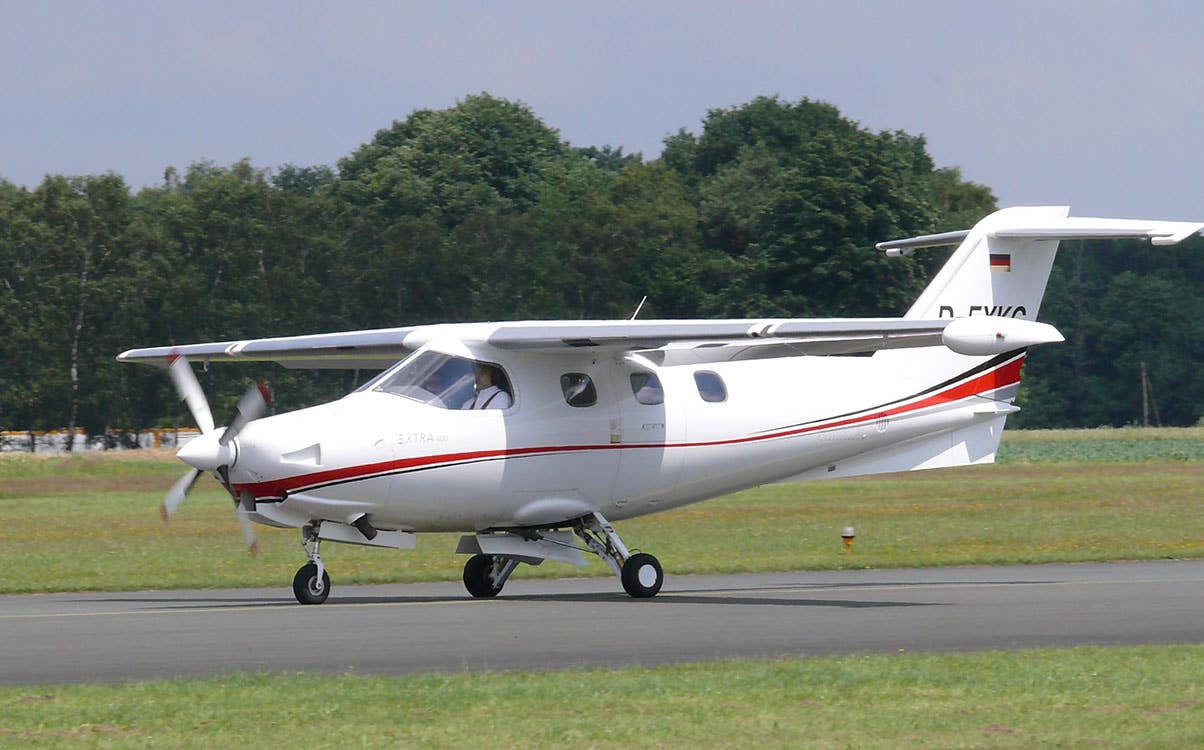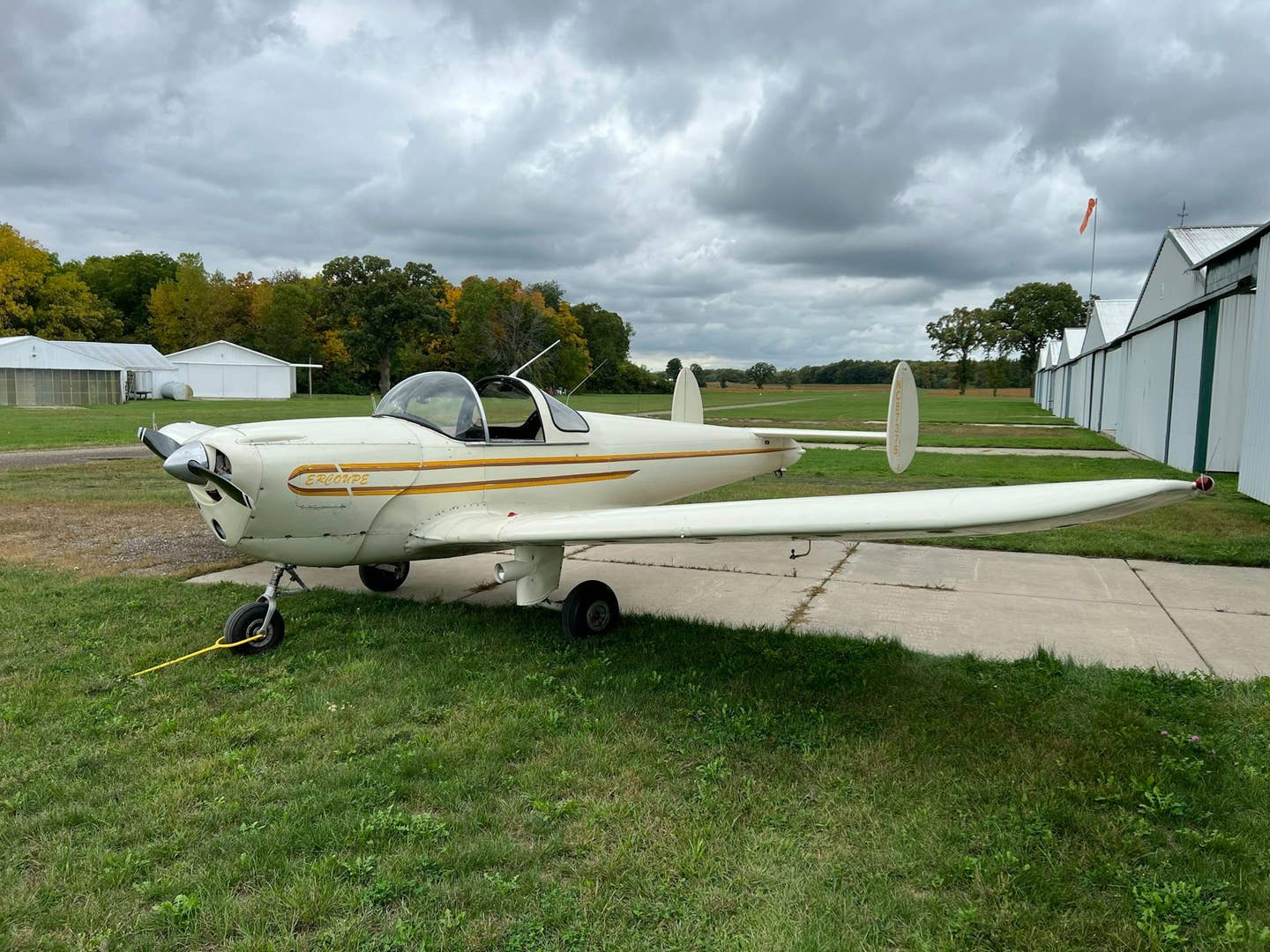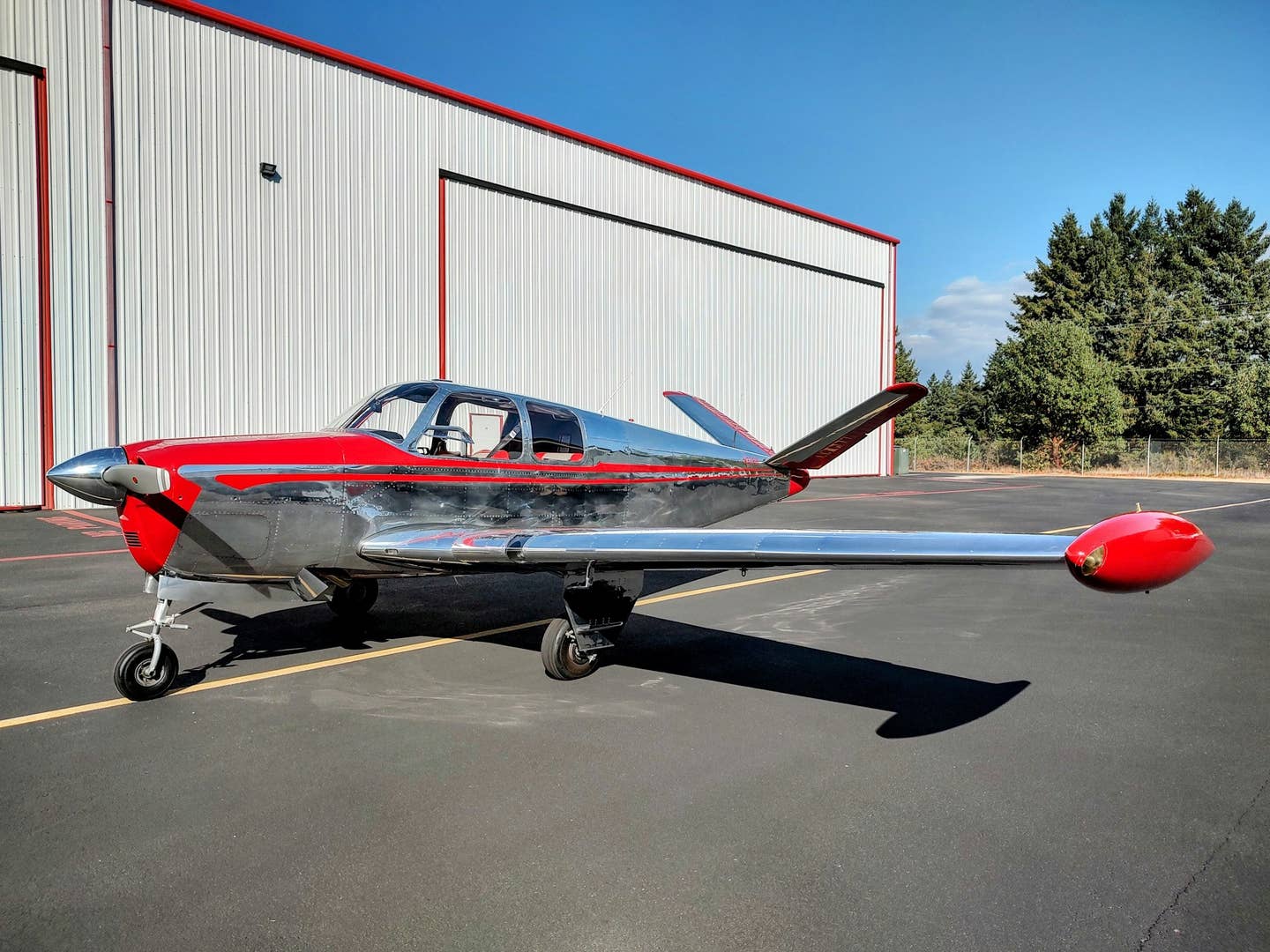The Extra EA 400: A Pressurized Composite, Transportation Beauty
As with so many outstanding aircraft, the Extra 400/500 were significantly ahead of their times and financially challenged.

Extra EA 400
Looking for a low-time, used, six-seat piston single that cruises at FL 250 in pressurized comfort and can be found for the price of a used Cirrus SR 22? Oh, and it won't be mistaken for anything else on the ramp! If so, the answer is Walter Extra's EA 400!
This all-composite high-winged beauty was Extra Aircraft's entry into the market pioneered by the Piper Malibu. With the genes of an aerobatic aircraft, and some elegant engineering, the Extra 400's appearance and performance are nothing short of spectacular. To understand this incredible plane, it helps to start with Walter Extra himself.
Walter Extra's roots are in aerobatic flying and competition. Working his way up through the aerobatic ranks, Extra built and flew his own Pitts special, competed in the 1982 world aerobatic championships, and designed his first scratch-built airplane, the Extra 230. Its success led to the iconic Extra 300, a two-seat steel tube and composite wing aerobatic competition aircraft that revolutionized the industry and earned countless aerobatic titles along the way.
Walter Extra's experimentation with high-strength composite airframes set the stage for the development of a revolutionary single-engine transportation machine. From the start, it would be a technological tour de force. Truly a clean-sheet design, the EA 400 resembles no existing airplane. Sporting a high wing, steeply sloped widescreen and T tail, the airframe is a lesson in efficient design. The high wing, a rarity in this class of aircraft, allowed for the wing spar to be placed above the cabin for increased cabin volume.
Keen observers will note the lack of traditional cooling air intakes. To handle the stresses of flight-level cruise altitudes and steep descents, Extra chose the water-cooled Continental TSIOL-550-C Voyager engine. The liquid-cooled Voyager series was developed for the rear engine on Burt Rutan's radical ultra-long-range Voyager that carried Dick Rutan and Jeana Yeager around the world non-stop. Engine cooling was provided by a single radiator mounted in a scoop under the nose, and the Voyager engine was virtually impervious to shock cooling due to steep idle descents from the flight levels.
The exquisite landing gear looks more at home on an F-16 than a general aviation single. However, its compact dimensions add to aerodynamic efficiency and provide increased interior space. The Extra 400 looks fast simply sitting on the ramp. Significant attention was paid to every aspect of aerodynamic efficiency.
For example, unlike so many piston singles, the vertical tail is not offset to compensate for P factor. Rather, the airfoil is designed to provide differential side force as speed increases. Once again, the focus on speed through clean airframe design comes through loud and clear.
So, with the looks of a fighter jet, a short wing, and a 350-horsepower water-cooled engine, is the Extra 400 an unforgiving airplane in the traffic pattern? It's not. The sophisticated wing, designed with assistance from Delphi University, features fully recessed fowler flaps that reduce the stall speed from 79 to 58 knots at maximum gross weight. As you would expect from the designer of aerobatic championship aircraft, control response is crisp and precise, if a bit on the heavy side.
The result of all this effort is an aircraft that will climb at nearly 1,400 feet per minute and cruise at nearly 250 knots at 25,000 feet for over 1,300 nautical miles while the pilot and up to five passengers ride in shirtsleeve comfort. Today, the idea of a nearly million-dollar Cirrus SR 22 has come to be accepted. However, when the Extra 400 debuted in 1998, the world of general aviation was not ready for its steep price tag and unique design. Word is that the aircraft required nearly 16,000 production hours to construct. Divide those hours into the million-dollar price tag, and the problem becomes clear.
However, for pro shoppers, very low-hour Extra 400s can be found for considerably less today. While only 27 Extra 400s were completed, a recent look at the online aircraft sales websites yielded two for sale, both with under 1,000 hours and price tags right around $400,000. Thus, for the price of a new Cessna 172, transcontinental range, flight-level performance and cabin-class comfort can be yours.
"Truly a clean-sheet design, the EA 400 resembles no existing airplane. Sporting a high wing, steeply sloped widescreen and T tail, the airframe is a lesson in efficient design. The high wing, a rarity in this class of aircraft, allowed for the wing spar to be placed above the cabin for increased cabin volume."
Just like the Piper Malibu, the Extra 400 cried out for turboprop power. Extra Aircraft looked for a light and powerful turboprop to substitute for the heavy Continental and found it in the compact Rolls-Royce-Allison 250. Dubbed the Extra EA 500, the efficient little turbine slipped easily into the 400's cowling. It weighed just 200 pounds and measured a meager 45 by 19 inches. The addition of the turboprop created an aircraft that did everything its predecessor could, but with turbine smoothness and simplicity. While the service ceiling and rate of climb remained the same, the Extra 500 boasted a 30-knot increase in cruise speed. Due to the thrifty Rolls-Royce turbine, the 500 featured a range of nearly 1,800 nautical miles and an endurance of over seven hours, all of this while retaining that modest 58-knot stall speed.
As with so many outstanding aircraft, the Extra 400/500 were significantly ahead of their times and financially challenged. Throughout the early 2000s, Walter Extra and his magnificent airplanes looked for financial supporters to share the vision. Stories emerged of possible production facilities in Colorado or Arizona. Eventually, bankruptcy gave the company some financial relief. However, production of the 500 ended in 2015 and never restarted.
For the right buyer, the Extra 400 is a truly remarkable cross-country cabin class aircraft at a relatively modest purchase price. Its small but loyal owner base has kept these remarkable aircraft up to date with modern avionics and meticulous maintenance. The Extra 400 remains ahead of its time, elegant to the eye and accomplished in the air. It truly is an incredible plane!
Do you love Incredible Planes? Learn about The McDonnell 119/220 here.

Subscribe to Our Newsletter
Get the latest Plane & Pilot Magazine stories delivered directly to your inbox






